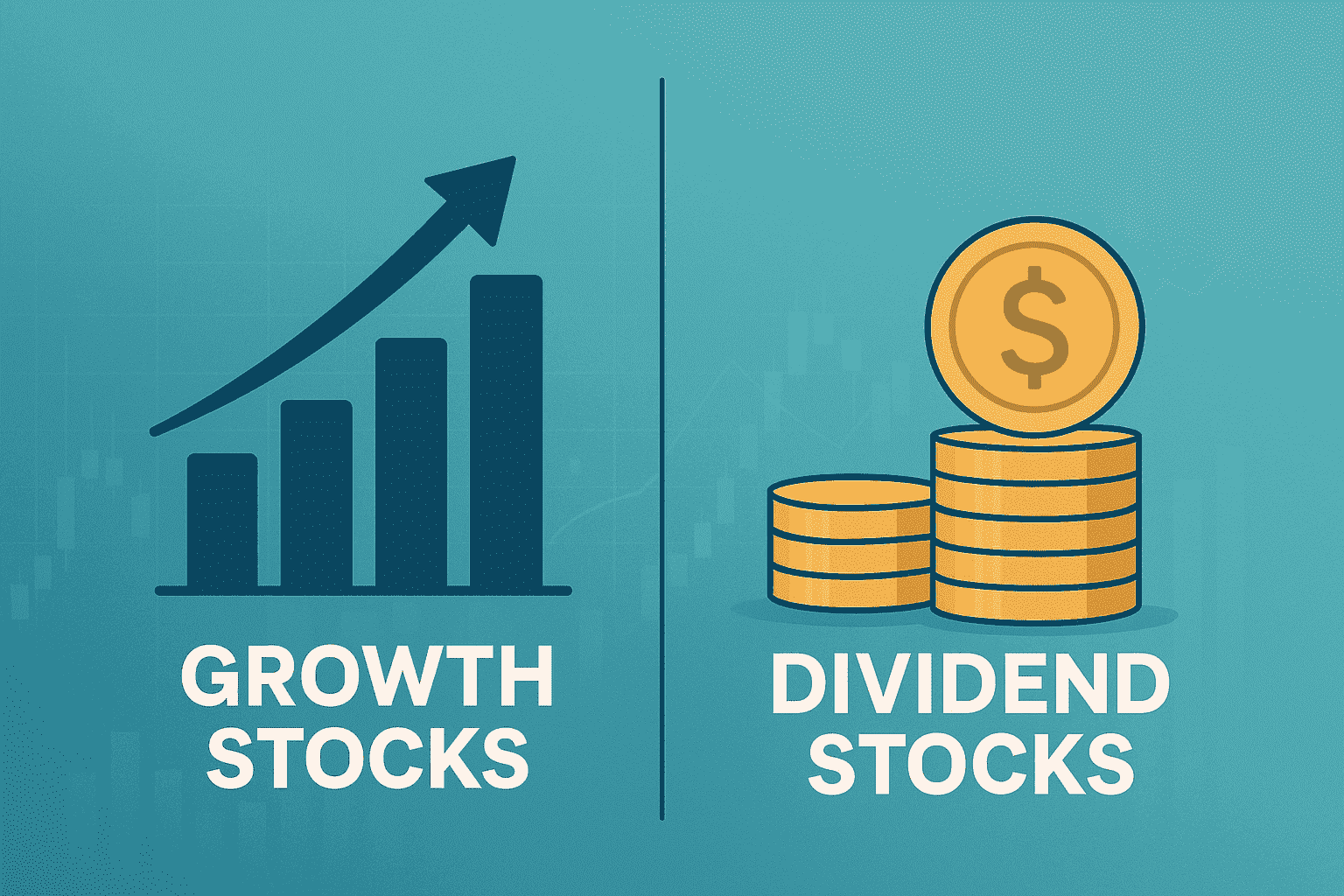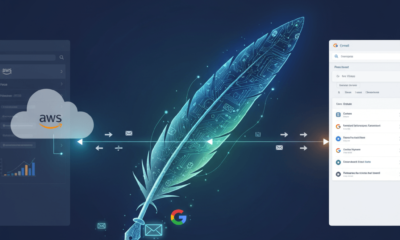Business
15 Profitable Side Hustles for Extra Money
In today’s fast-paced world, many of us are searching for ways to boost our income and achieve financial freedom. Whether you’re saving for a dream vacation, paying off debt, or simply looking to pad your savings account, a side hustle can be the perfect solution. The beauty of side hustles is that they offer flexibility, allowing you to work around your existing commitments and pursue something you’re passionate about. From creative endeavors to service-oriented gigs, there’s a side hustle out there for everyone.
In this article, we’ll explore 15 exciting side hustle ideas based on the Side Hustle Database that can help you make extra money while doing something you enjoy.
1. Become an IRL or Online Tutor
Tutoring is a flexible side hustle that can be done in person (IRL) or online. It involves helping students improve their understanding of specific subjects, ranging from elementary school topics to college-level courses. Online platforms such as Tutor.com or Wyzant can connect you with students, while local advertisements can help you find in-person opportunities.
According to Side Hustles Database, tutors can earn between $15 to $100 per hour, depending on their expertise and the subject matter. Specialized subjects like advanced mathematics or science can command higher rates. Online platforms may take a commission, but they also provide a steady stream of students.
How to Get Started:
- Identify your subject expertise and target audience.
- Create a profile on tutoring platforms or advertise locally.
- Set competitive rates based on your experience and market demand.
- Prepare teaching materials and schedule sessions according to your availability.
2. Start a Blog or Newsletter
Blogging or creating a newsletter allows you to share your knowledge, hobbies, or interests with a broader audience. This side hustle requires consistent content creation and audience engagement. Platforms like WordPress or Substack can help you get started with minimal upfront costs.
Income from blogging or newsletters can vary widely. Successful bloggers can earn from $100 to several thousand dollars per month through advertising, affiliate marketing, sponsored content, and selling products or services.
How to Get Started:
- Choose a niche that you are passionate about and has an audience.
- Set up a blog using platforms like WordPress or start a newsletter with Substack.
- Consistently create valuable content to grow your audience.
- Monetize your blog through ads, affiliate links, or selling products.
Learn more about how to make money with blogging here.
3. Become a Transcriber or Translator
Transcription involves converting audio files into written text, while translation requires converting text from one language to another. Both roles demand excellent listening and language skills. Websites like Rev and Upwork offer opportunities for transcribers and translators.
Transcribers can earn between $15 to $30 per hour, while translators might earn $20 to $50 per hour, depending on language pairs and expertise. Specialized fields like legal or medical translation can offer higher pay.
How to Get Started:
- Assess your language skills and choose a niche.
- Sign up on platforms like Rev, TranscribeMe, or Upwork.
- Complete sample tests to demonstrate your skills.
- Build a portfolio and gather client testimonials to increase your rates.
4. Start a Podcast
Podcasting involves creating audio content on topics of interest. It can be a great way to share your expertise or entertain an audience. Platforms like Anchor or Spotify make it easy to distribute your podcast to a wide audience.
Podcasters can earn money through sponsorships, listener donations, and merchandise sales. While initial earnings might be low, successful podcasts can generate significant income once they build a large audience.
How to Get Started:
- Choose a podcast niche and format.
- Invest in quality recording equipment and editing software.
- Record and edit your episodes, then publish them on platforms like Anchor.
- Promote your podcast through social media and collaborate with other podcasters.
5. Rent Out Your Home or a Spare Room
Renting out your home or a spare room can be a lucrative side hustle, especially if you live in a desirable location. Platforms like Airbnb or Vrbo connect you with travelers looking for short-term accommodations.
Earnings depend on location, property type, and rental frequency. Hosts can earn anywhere from $500 to several thousand dollars per month. Special events or peak tourist seasons can significantly increase your income.
How to Get Started:
- Prepare your space by ensuring it is clean and well-furnished.
- Create a listing on platforms like Airbnb, including high-quality photos and a detailed description.
- Set competitive pricing based on local market rates.
- Manage bookings and communicate promptly with guests to maintain high ratings.
6. Offer Pet Sitting and Dog Walking Services
Pet sitting and dog walking are ideal for animal lovers who want to earn extra income. These services involve caring for pets while their owners are away, which can include feeding, walking, and providing companionship. This side hustle offers flexibility and the opportunity to work with a variety of animals.
Pet sitters and dog walkers can earn between $15 to $30 per hour, depending on location and the services offered. Additional services such as overnight stays or pet grooming can increase earnings.
How to Get Started:
- Decide on the types of services you will offer (e.g., walking, sitting, overnight care).
- Create a business plan, including pricing and service areas.
- Obtain necessary licenses and insurance to operate legally.
- Market your services through social media, local advertisements, and by joining platforms like Rover or Wag.
7. Deliver Groceries and Other Items
Delivering groceries and other items is a convenient side hustle for those who enjoy driving and want to work flexible hours. This involves picking up and delivering orders to customers’ homes using apps like Instacart, DoorDash, or Uber Eats.
Drivers can earn between $10 to $25 per hour, with potential tips increasing overall income. Earnings depend on location, demand, and the number of deliveries completed.
How to Get Started:
- Sign up with delivery platforms such as Instacart, DoorDash, or Uber Eats.
- Ensure you have a reliable vehicle and smartphone.
- Familiarize yourself with the app’s interface and delivery procedures.
- Begin accepting delivery requests and aim to provide excellent customer service to earn tips.
8. Become an Affiliate Marketer
Affiliate marketing involves promoting products or services and earning a commission on sales made through your referral links. This can be done through blogs, social media, or YouTube channels. It’s a low-cost way to start earning passive income.
Affiliate marketers can earn from a few hundred to thousands of dollars per month, depending on their audience size and engagement. Commissions typically range from 5% to 30% per sale.
How to Get Started:
- Choose a niche that aligns with your interests and expertise.
- Create a platform (blog, social media, YouTube) to share content and affiliate links.
- Join affiliate programs through networks like Amazon Associates, ShareASale, or ClickBank.
- Produce valuable content that encourages your audience to make purchases through your links.
9. Mow Lawns and Do Other Landscaping Tasks
Lawn care and landscaping are excellent side hustles for those who enjoy working outdoors. Services can include mowing, trimming, planting, and general garden maintenance. This work is seasonal but can be highly lucrative during peak months.
Earnings can range from $30 to $50 per hour, depending on the services offered and the local market. Specialized services like landscape design can command higher rates.
How to Get Started:
- Acquire basic landscaping tools like a lawnmower, trimmer, and rake.
- Research local market demand and set competitive prices.
- Advertise your services through flyers, social media, and local community boards.
- Provide high-quality service to build a loyal client base and gain referrals.
10. Monetize a YouTube Channel
Creating and monetizing a YouTube channel involves producing video content on topics you are passionate about. Monetization can occur through ads, sponsorships, and merchandise sales. This side hustle requires creativity and consistency.
YouTube earnings vary widely, from a few dollars to thousands per month. Income is generated through ad revenue, sponsorships, and viewer donations. Building a large, engaged audience is key to maximizing earnings.
How to Get Started:
- Choose a niche and create a YouTube account.
- Produce high-quality, engaging videos and upload them consistently.
- Apply for the YouTube Partner Program once you meet the eligibility criteria (1,000 subscribers and 4,000 watch hours).
- Explore additional revenue streams like sponsorships and merchandise sales.
11. Start a Dropshipping Business
Dropshipping is an e-commerce business model where you sell products online without holding any inventory. Instead, when a customer makes a purchase, the order is fulfilled by a third-party supplier who ships the product directly to the customer. This model minimizes upfront costs and allows you to focus on marketing and customer service.
Dropshipping can be highly profitable, with some entrepreneurs earning over $100,000 annually. However, profit margins can be slim, typically ranging from 15% to 20% due to competition and supplier costs.
How to Get Started:
- Choose a Niche: Identify a target market with high demand and low competition.
- Find Reliable Suppliers: Use platforms like AliExpress or SaleHoo to find suppliers with quality products and good reputations.
- Set Up an Online Store: Create an e-commerce website using platforms like Shopify or WooCommerce.
- Market Your Store: Utilize social media, SEO, and paid advertising to attract customers.
12. Become a Rideshare Driver
Rideshare driving involves using your vehicle to transport passengers via platforms like Uber or Lyft. It offers flexible working hours and the opportunity to meet new people while earning money.
Earnings vary by location and demand, ranging from $5 to $26 per hour. Drivers can increase their income through tips, bonuses, and surge pricing during peak hours.
How to Get Started:
- Meet Requirements: Ensure you have a valid driver’s license, a reliable four-door vehicle, and meet age and driving experience criteria.
- Sign Up: Apply through the rideshare platform’s website and complete the necessary background checks.
- Familiarize Yourself with the App: Learn how to use the app effectively to manage rides and maximize earnings.
13. Participate in Paid Online Surveys
Paid online surveys are a simple way to earn extra money by providing feedback to companies on their products and services. This side hustle can be done from home and requires minimal effort.
While not highly lucrative, survey takers can earn a modest income, typically enough to cover small expenses like utility bills or daily coffee. Earnings vary based on the number of surveys completed and the platforms used.
How to Get Started:
- Sign Up on Reputable Platforms: Join sites like Swagbucks, InboxDollars, or Branded Surveys.
- Complete Your Profile: Ensure your profile is accurate to receive relevant survey opportunities.
- Set a Schedule: Dedicate specific times to completing surveys to maximize consistency and earnings.
14. Give Tours of Your Neighborhood
Neighborhood tours involve showcasing local attractions, history, and culture to tourists or new residents. This side hustle is ideal for those with a passion for storytelling and local knowledge.
Tour guides can charge per person or group, with rates varying based on the tour’s length and uniqueness. Earnings can be substantial, especially in tourist-heavy areas.
How to Get Started:
- Research Local Requirements: Check if your city requires a license or certification to conduct tours.
- Design Your Tour: Create a unique itinerary highlighting interesting stories and landmarks.
- Advertise Your Services: Use platforms like Airbnb Experiences or local tourism websites to reach potential clients.
15. Offer Digital Marketing Services
Digital marketing involves promoting products or services online through various channels such as social media, SEO, and email marketing. This side hustle is well-suited for those with marketing skills and a desire to help businesses grow online.
Digital marketers can earn from a few hundred to several thousand dollars per month, depending on their expertise and the scope of services offered.
How to Get Started:
- Gain Skills and Certification: Consider obtaining a digital marketing certification to enhance credibility.
- Define Your Services: Decide on the specific services you will offer, such as SEO, PPC, or social media management.
- Find Clients: Use networking, online platforms, and cold outreach to acquire your first clients and build a portfolio.
Business
The Troubling Phenomenon of Pastors Selling Land in Heaven: Faith, Money, and Accountability

In a world where faith communities often rely on trusted spiritual leaders, reports of pastors promising heavenly real estate in exchange for donations or purchases have emerged with unsettling frequency. The notion of “selling land in heaven” is not just a quaint parable turned sales pitch; it touches on theology, ethics, church governance, and the vulnerable finances of believers. This article examines the phenomenon from multiple angles: how it happens, why it resonates for some, the risks involved, and practical ways to protect congregants and promote accountability.
What It Means to “Sell Land in Heaven”
Defining the Core Idea
- The phrase often describes attempts by a religious leader to monetize spiritual promises by claiming that donations, purchases, or specific financial acts will secure a tangible reward in the afterlife.
- Common patterns include:
- Promises of wealth, health, or favor in return for large gifts or “seed money.”
- Taxing or labeling certain donations as “spiritual investments” that guarantee heavenly returns.
- Framing ongoing financial commitments as foundational to personal salvation or community blessing.
The Theology Some Use to Justify It
- The practice draws on misinterpretations of prosperity gospel, indulgences, or ritualized acts of giving as merit-based currency.
- In some cases, leaders use persuasive rhetoric about spiritual capitalism: “Heaven’s inventory is stocked by your generosity today.”
Distinguishing Between Generous Giving and Exploitative Claims
- Healthy church giving often arises from voluntary, informed giving tied to transparent budgeting and mission-focused needs.
- Exploitative pitches tend to:
- Create a sense of coercion or isolation for those who cannot participate financially.
- Use fear-based language about sin, punishment, or divine withheld blessings.
- Offer vague or unverifiable “returns” that cannot be measured in tangible outcomes.
Why This Practice Persists
Psychological and Social Drivers
- Belonging and identity: For many, church affiliation provides community and purpose; compelling promises can reaffirm that belonging.
- Hope and agency: In uncertain times, people crave assurance. Promises of heavenly rewards can feel hopeful, even if unfounded.
- Authority and trust: Charismatic leaders wield influence; congregants may defer to perceived spiritual expertise.
Economic Incentives and Organizational Dynamics
- Revenue streams: Some churches rely on donations for operational viability, renovations, or ambitious programs.
- Longevity of leadership: In systems with centralized leadership, a single pastor’s vision (and finances) can dominate decision-making.
- Power dynamics: Financial control can translate into influence over congregants’ personal lives and choices.
The Ethical and Legal Landscape
Ethical Boundaries for Religious Leadership
- Most faith traditions emphasize stewardship, humility, and care for the vulnerable.
- Ethical concerns arise when faith is weaponized for financial gain, or when manipulation, coercion, or deception is used.
Legal and Regulatory Considerations
- In many jurisdictions, religious organizations enjoy certain tax exemptions. This status comes with accountability expectations, transparency requirements, and anti-fraud protections.
- Legal questions can arise around:
- Misrepresentation or fraud if promises imply monetary sales for heavenly outcomes.
- Consumer protection issues when individuals are marketed goods (even if intangible) under false pretenses.
- Nonprofit governance standards, including fiduciary duties, conflicts of interest, and financial disclosures.
Real-World Impacts: Consequences for Congregants
Financial Harm
- Congregants may deplete savings, incur debt, or forego essential expenses to meet donation targets.
- Wealth disparities can widen, with vulnerable members disproportionately affected.
Spiritual and Emotional Harm
- Trust erodes when promises fail or are revealed as transactional.
- Feelings of guilt, shame, or spiritual injury can linger long after a sermon.
Community Trust and Institutional Health
- Word spreads beyond a single church, affecting broader perceptions of religious institutions.
- Donor fatigue and skepticism can hinder legitimate fundraising and mission work.
Detecting and Responding to Exploitative Practices
Early Warning Signs
- Consistent use of “seed faith” language tied to specific monetary commitments.
- Pressure tactics: “If you love God, you will give…” or guilt-based messaging.
- Promises that prayer or sacrifice will guarantee specific, verifiable outcomes in heaven.
- Lack of transparency around finances, budgets, and how funds are used.
Practical Steps for Congregants
- Request transparent financial reporting: budget outlines, how donations are allocated, and measurable outcomes.
- Seek independent oversight: establish or support a finance committee with diverse leadership.
- Compare claims with core doctrine: consult multiple trusted theological sources to evaluate the claims.
- Practice informed giving: avoid pressure-filled decisions; take time to reflect and consult mentors or advisors.
Steps for Church Leadership and Governance
- Establish clear ethical guidelines: codify boundaries between spiritual leadership and financial solicitation.
- Build robust governance structures: independent treasurers, audit processes, and policies on conflicts of interest.
- Foster accountability culture: open forums, grievance mechanisms, and whistleblower protections.
- Prioritize education: equip congregants with media literacy and critical thinking about fundraising rhetoric.
Practical, Evidence-Based Alternatives to Faith-Based Real-World Costs
If a faith community seeks to support its mission without compromising ethical standards, here are constructive approaches:
- Transparent stewardship campaigns: clearly articulate needs, timelines, and outcomes; provide regular financial updates.
- Mission-driven fundraising: tie gifts to specific, auditable programs (e.g., scholarships, community services) with measurable impact.
- Membership-based budgeting: align programs with real, documented community needs and capacity, avoiding coercive tactics.
- Independent audits: annual external audits and published audit reports to build trust.
- Beneficiary-centered models: ensure programs prioritize the well-being and autonomy of those served, with consent and dignity at the forefront.
Case Studies: Lessons from the Field
Note: This section offers generalized, anonymized patterns to illustrate insights without naming specific individuals or churches.
- Case A: A growing church faced rapid expansion and instituted a bold “project seed” fundraiser. After initial enthusiasm, financial shortfalls and member complaints mounted. An external audit revealed a lack of budget transparency, leading to policy reforms and the creation of an independent oversight board.
- Case B: A pastors’ council implemented a transparent giving policy, separating spiritual messaging from financial pitches. The initiative included annual financial disclosures and a code of conduct, rebuilding trust among congregants.
- Case C: A denomination issued a ethics charter prohibiting fundraising practices that promise celestial benefits. The charter was accompanied by training on ethical stewardship and a clear complaint mechanism.
FAQs
- Is it illegal for a pastor to promise heaven in exchange for money?
- Legality varies by jurisdiction. Some practices may violate fraud or consumer protection laws, especially if misrepresentations are involved. Ethical concerns remain even if there isn’t a specific statute broken.
- How can I protect myself from exploitative fundraising in my church?
- Seek transparent financial information, ask questions about how funds are used, advocate for independent audits, and discuss concerns with trusted leaders or denomination authorities.
- What should I look for in a healthy church fundraising strategy?
- Clarity, consent, accountability, measured outcomes, and alignment with the mission. Fundraising should inform and empower, not coerce or promise guaranteed spiritual returns.
- How can churches balance generosity with ethical fundraising?
- Emphasize stewardship education, transparent budgets, and community-focused initiatives. Avoid language that implies guaranteed heavenly rewards tied to gifts.
- If I suspect fraud in a religious organization, what should I do?
- Document concerns, seek counsel from trusted advisors, and report to appropriate authorities or denominational oversight bodies. If there are imminent risks to individuals, contact local authorities.
- Are there positive models for faith-based fundraising?
- Yes. Models that prioritize transparency, accountability, and mission impact—such as project-based campaigns, matched giving, or endowments—toster trust and long-term sustainability.
- How can denominational bodies help prevent these practices?
- By issuing ethical guidelines, providing training, establishing independent audit mechanisms, and creating safe channels for reporting concerns.
Conclusion: Navigating Faith, Finance, and Integrity
The temptation to frame heavenly outcomes as commodities is powerful in some contexts. Yet the integrity of religious communities hinges on a careful balance between generosity and accountability. Faith leaders have a responsibility to shepherd communities with honesty, humility, and vigilance against the misuse of spiritual authority for financial gain. Congregants deserve transparency, respect, and opportunity to participate in decisions that affect their livelihoods and beliefs.
If you’re navigating a situation where a pastor or church seems to be monetizing heaven or making heaven a saleable commodity, you’re not alone. Start with questions, seek corroboration, and lean on governance mechanisms that prioritize the dignity and wellbeing of every member. By fostering transparent practices, ethical leadership, and accountable stewardship, religious communities can sustain their mission without compromising trust or faith.
More pages
The Art and Science of Pressure Washing: How Professional Services Revitalize Your Property
Business
Growth vs. Dividend: Where Should You Park Your Capital?

When considering long-term wealth creation, one of the early decisions in stock investing often revolves around this question: Should you prioritise capital appreciation or regular income? This is essentially the distinction between growth stocks and dividend stocks.
Both types of stocks serve different purposes and appeal to different investor profiles. In this blog, we will walk through what they mean and when each might be more suitable depending on your financial goals and stage in life.
What Are Growth Stocks?
Growth stocks represent companies that typically reinvest their profits to speed up business expansion rather than distributing dividends to shareholders. These are businesses with strong earnings potential, operating in sectors that are expected to grow faster than the broader economy.
The core idea is capital appreciation. Investors in growth stocks rely on the share price rising over time, aiming to benefit from the business’s increasing value. These may be more suitable for individuals with a longer investment horizon and the willingness to tolerate short-term volatility in exchange for potentially higher long-term gains.
What Are Dividend Stocks?
Dividend stocks, on the other hand, are companies that share a portion of their profits with shareholders at regular intervals, typically quarterly or annually. These are usually well-established firms with steady cash flows that don’t require all their earnings for reinvestment.
These stocks are often preferred by investors looking for periodic income, such as retirees or those seeking to supplement cash flows without needing to sell their holdings. While they may not offer the same growth as their counterparts, the consistency of dividend payouts offers a level of stability. This becomes particularly important in uncertain market conditions.
How to Decide Which Suits You Better?
So, should you go with the fast-paced potential of growth stocks or the steady, rewarding path of dividend stocks? Let’s compare the two across a few key areas.
1. Investment Objective
Growth stocks are generally suitable for those aiming to build long-term wealth and don’t require immediate income from their investments.
Dividend stocks are more aligned with those seeking regular income or looking to reduce portfolio volatility.
2. Risk and Volatility
Growth stocks tend to be more volatile, as their returns are closely tied to market sentiment, earnings growth, and industry trends.
Dividend stocks are from more stable and large-cap companies, which are relatively stable and may help cushion a portfolio during market downturns.
3. Reinvestment Approach
In growth stocks, earnings are typically reinvested by the company itself, supporting internal compounding and potential for business expansion.
Dividend stocks distribute the earnings to investors, allowing flexibility in how that income is used, be it reinvestment or consumption.
The best approach is to diversify by adding both growth and dividend stocks.
A balanced approach lets you enjoy growth in your early investing years and steady income later when you prefer more stability.
Final Thoughts
There is no one-size-fits-all answer to the growth vs. dividend debate. The better question is: What suits your financial goals, time horizon, and temperament?
If you have a long-term view, and are focused on building wealth, growth stocks may be your ticket. But if you appreciate cash flow or want to hedge against volatility, dividend stocks can add stability to your portfolio.
In the end, it is not about choosing one over the other. It is about aligning your investments with your life stage and goals. Park your capital where it grows and serves you best.
Business
UK Housing Market Predictions for 2026: A Practical Look at What’s Coming

The UK housing market has always been a bit of a rollercoaster—full of ups, downs, and unexpected twists. Whether you’re trying to get on the property ladder, thinking about selling, or considering an investment, knowing what’s coming can make all the difference.
So, what can we actually expect by 2026? Will prices keep rising? Will mortgages become more affordable? And where are the best opportunities for buyers and investors?
Let’s break it all down—without the jargon—so you can make smart decisions for your future.
1. Where We Are Now: The 2024 Housing Market Snapshot
Before we jump into predictions, it’s worth looking at where things stand today.
-
House Prices: After the pandemic boom, prices have cooled off a bit. Higher mortgage rates and living costs have made buyers more cautious.
-
Mortgage Rates: With the Bank of England base rate at 5.25% (as of mid-2024), borrowing isn’t cheap. Many first-time buyers are struggling to save for deposits while rents eat into their budgets.
-
Supply & Demand: There still aren’t enough homes, especially affordable ones. This keeps prices from dropping too much, even when demand slows.
This sets the stage for what’s likely to happen over the next couple of years.
2. What Will Shape the Market in 2026?
Several big factors will determine whether 2026 is a buyer’s, seller’s, or investor’s market.
A. Will Mortgage Rates Finally Drop?
This is the million-pound question. Experts think rates could ease to around 4-4.5% by 2026 if inflation keeps falling. That would make mortgages more manageable, especially for first-time buyers.
But if inflation stays stubborn, rates might not budge much. Keep an eye on the Bank of England’s moves in 2025—they’ll give us the best clues.
B. Will House Prices Rise or Fall?
Most forecasts suggest slow but steady growth (1-3% per year) rather than a crash or boom. Why?
-
Shortage of homes means prices won’t plummet.
-
Affordability limits mean they won’t skyrocket either.
That said, some areas will do better than others (more on that soon).
C. Will More Homes Be Built?
The government keeps promising to fix the housing crisis, but progress is slow. We’d need 300,000+ new homes a year just to keep up with demand—right now, we’re falling short.
Until that changes, prices in popular areas will stay high.
D. How Will Politics Play a Role?
The next general election (due by early 2025) could shake things up.
-
Labour might push for more social housing and rent controls.
-
Conservatives could tweak Help to Buy or stamp duty rules.
Either way, policy changes could sway the market—so stay tuned.
3. Where Will Prices Grow the Most? (Regional Breakdown)
Not all parts of the UK will move at the same pace. Here’s what to expect:
London & the South East: Slow and Steady
-
Prices are already so high that growth will likely be minimal (0-2%).
-
Prime central London could bounce back if foreign investors return.
The North & Midlands: Still Hotspots
-
Cities like Manchester, Birmingham, and Leeds offer better affordability and strong job markets.
-
Big projects like HS2 (if it happens) will keep demand high.
Scotland & Wales: A Mixed Picture
-
Edinburgh and Glasgow remain strong, but rural areas may slow down.
-
Wales is seeing more buyers priced out of England, boosting demand in places like Cardiff.
4. The Rental Market in 2026: More Pain for Tenants?
If you’re renting, brace yourself:
-
Rents will keep rising—landlords are passing on higher mortgage costs.
-
Fewer rental homes—some landlords are selling up due to tax changes and regulations.
-
Build-to-Rent growing—big investors are stepping in, but these flats often come at a premium.
Renters’ tip: If you find a good deal, consider a longer lease to lock in the rate.
5. Smart Moves for Buyers, Sellers & Investors
If You’re Buying…
✅ Watch mortgage rates closely—if they dip below 4.5%, jump on a deal.
✅ Look beyond London—cities like Sheffield and Liverpool offer better value.
✅ Check for government schemes—shared ownership or First Homes could help.
If You’re Selling…
✅ Price realistically—over-ambitious sellers are struggling in today’s market.
✅ Boost your home’s appeal—small fixes (fresh paint, decluttering) can make a big difference.
✅ Be patient—if the market’s slow, you might need to wait for the right buyer.
If You’re Investing…
✅ Focus on high-yield areas—Manchester, Liverpool, and Birmingham still offer solid returns.
✅ Consider HMOs—renting by the room can maximise income.
✅ Watch out for tax changes—new rules could affect your profits.
Final Thought: A More Balanced Market Ahead
2026 probably won’t bring a housing crash or a sudden boom. Instead, expect a steady, slower-moving market where:
-
Prices creep up slightly in most areas.
-
Mortgages get a bit cheaper (but don’t expect pre-2022 rates).
-
Rents keep rising unless the government steps in.
The key takeaway? Do your homework, stay flexible, and don’t rush into decisions. Whether you’re buying, selling, or investing, the right move depends on your personal situation—not just the market.
You Should also read this post










